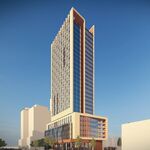kettal
Banned
Were you abandoned in a subway station as a child? Is this you every time you see the word 'subway' on the internet? http://www.youtube.com/watch?v=PbcctWbC8Q0
That's what I look like when I post on this forum.
Were you abandoned in a subway station as a child? Is this you every time you see the word 'subway' on the internet? http://www.youtube.com/watch?v=PbcctWbC8Q0
That's just plain rude. You don't agree with people and you start calling them silly names?It's amazing how threatening you find anybody questioning the LRT fanboy consensus.
That's just plain rude. You don't agree with people and you start calling them silly names?
May I ask how you came to the conclusion that Don Mills is a primary corridor and Finch is a secondary corridor?
And please. The Canada LIne is not LRT. It's a automated light metro that has already reached capacity, and cannot be expanded without a huge cost. $2 Billion waste of money.
Finch is just based on the fact that it is directly south of Steeles and north of Sheppard, both of which comparatively I feel are more major of routes than Finch.
Ok, I was just curious, as the Finch east & west buses are the two of highest ridership in the system.
If passengers aren't as predicted, it won't reach capacity for a long time. Yonge is at capacity now ... look to that line for options. Longer trains, more frequent trains, relief lines.If it's better than what will be placed along Eglinton, what happens when Eglinton reaches capacity too? Because if it is built as an LRT, it will reach it's capacity very quickly.
If passengers aren't as predicted, it won't reach capacity for a long trim. Yonge is at capacity now ... look to that line for options. Longer trains, more frequent trains, relief lines.
Relief lines for Eglinton ... wouldn't that be great ... a Lawrence and St. Clair LRT. With a bit of creativity there could be service on Lawrence East through Bayview to eliminate the jog; and St. Clair service could go in a tunnel to increase capacity ... and east of Yonge ... perhaps it could cross the Don and join with Overlea or O'Connor and then St. Clair East in Scarborough.
Wouldn't that be a wonderful problem to have! And if Eglinton ridership exceeds expectations to the point that the line is overcapacity, that would certainly prove the naysayers wrong!
Umm ... no ... not sure where that came from. Subway where warranted should be built. Spadina Extension, Yonge Extension, Downtown Relief line, the planned 10-km of subway along Eglinton. Much of the SRT extension is currently planned as subway ... though I'm a bit skeptical about the necessity of that north of Sheppard.Wow, am I hearing this right? You're accusing others of "wanting to build subway everywhere" and are saying that we can't afford any subway.
It's designed to handle the predicted increase in traffic for at least a quarter-century ... probably longer; I've only seen numbers out to 2035. So it's not underdesigned. Much of the argument here is that people won't use the LRT, and it won't attract new riders; if true, then it won't have the predicted volumes. Yet here your using the argument that it will actually have more passengers than predicted. You can't argue at the same time that LRT is the wrong choice because it won't attract riders from other modes AND that it doesn't have enough capacity! That is my point.But you're citing an undersigned Eglinton reaching capacity as being a good thing?
I'm not the one who is arguing that it won't be used, and it will be over capacity at the same time!That's got to be the most pathetic argument I've ever seen ...
Why do you think it would exceed capacity within 20 years? Peak load is predicted at 5,400 passengers per hour in 2031. LRT can easily handle up to 12,000 passengers per hour.If it exceeds capacities within 20 years of opening, it was underbuilt..
I believe their geology is more challenging because of the high water table. The line also included crossings of three major bodies of water.
That's right. The dimensions are the same.
The stations are much shorter. That's one of the sources of savings. They attempted to compensate for shorter trains with automation that allows for higher frequencies.
They also standardized the station design to reduce costs.
I definitely don't think that's a factor. Many requirements are federal.
Vancouver is a much higher cost city than Toronto.
Vancouver has a higher minimum wage and higher wage levels generally.
Most of the savings on this line came from creative approaches to design (stacked tunnels, shorter stations, cut-and-cover, elevated segments) and project management.




